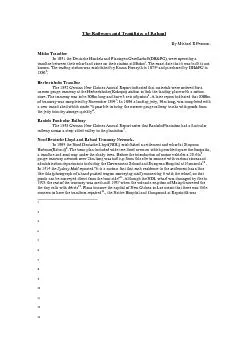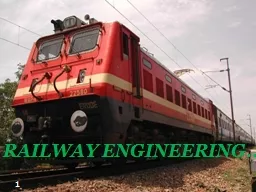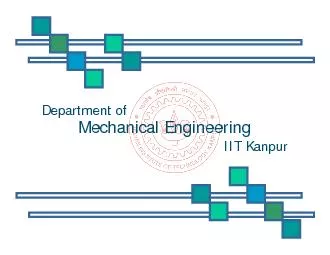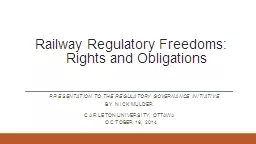PDF-The Railways and Tramlines of Rabaul
Author : debby-jeon | Published Date : 2015-11-18
By Michael R Pearson Mioko Tramline In 1891 the Deutsche Handels and Plantagen GesellschaftDHPG were operating a tramline between their wharf and store on their
Presentation Embed Code
Download Presentation
Download Presentation The PPT/PDF document "The Railways and Tramlines of Rabaul" is the property of its rightful owner. Permission is granted to download and print the materials on this website for personal, non-commercial use only, and to display it on your personal computer provided you do not modify the materials and that you retain all copyright notices contained in the materials. By downloading content from our website, you accept the terms of this agreement.
The Railways and Tramlines of Rabaul: Transcript
By Michael R Pearson Mioko Tramline In 1891 the Deutsche Handels and Plantagen GesellschaftDHPG were operating a tramline between their wharf and store on their station at Mioko 1 The exact. No CATEGORY OF PERSONS PERCENTAGE OF CONCESSION I Disabled Passengers Orthopaedically Handicapped Paraplegic persons who cannot travel without escort for any purpose 75 in Second Sleeper First Class AC3 tier AC Chair Car 50 in First AC and AC2 tie “Our German”. Rabaul. Creole German. Wendy . Kempsell. 2-10-2009. Papua New Guinea. Overview. Superstrate. . Substrate. German . Tok. . Pisin. English Melanesian languages. (. Kuanua. INTRODUCTION. Railway Engineering . : . The branch of Civil Engineering which deals with the design, construction and maintenance of the railway tracks for safe and efficient movements of trains.. Railway. Indian Railways Indian Railways Wheel Impact Load Detection System (WILD) Wheel Impact Loads and detection of Wheel Flats of tested at AjgainRailway Station, near Lucknow for more Strain-GuageTechnolo Accelerating investments - Railway Segment . A perspective by Bombardier Transportation. Harsh . Dhingra. Chief Country Representative, . Bombardier Transportation , India. Sept ‘2016. Overview of Bombardier. Parcel Business. CEP. B2C. E-Commerce. Indian Railways’ Earnings. (data are of Year 2016 and approximate). Rs.1,60,000 Cr. 65% is Freight . 1.2 % is Parcel . 90% from Bulk Commodities. 5% of Freight earnings from Container traffic . Rights and Obligations . . Presentation . to the . Regulatory . Governance . Initiative . By Nick Mulder. Carleton University, Ottawa . October 16, 2014. Freedoms . o. ver the Decades (1). OF. INTER-MODAL HUBS. NAIR . SEPTEMBER 24. TH. , 2014. K SATHINANATHAN. MD, DLI. Inter-modal Hub…. Modes of Transport. . Air. . Sea. Inland Water Transport. . Railways. . Road. Types of Hub. Air – Sea. BELARUSIAN, RUSSIAN AND KAZAKHSTAN . RAILWAYS. 2. 3. UTLC BASIC ROUTE . DOSTYK/ALTYNKOL. BREST. Distance: 5430 km. Time: . ~ . 5,5 days. Distance: ~20 000 km. Time: 28-35 days. 4. UTLC BUSINESS MODEL. Train advertising is the best way to promote your brand.. . gujarat tourism. Advantages. Reaches a captive, upscale urban passenger in addition to frequent . travellers. , and business professionals. Train advertising is the best way to promote your brand.. . gujarat tourism. Advantages. Reaches a captive, upscale urban passenger in addition to frequent . travellers. , and business professionals. Transport Development Policy Committee (. NTDPC. ). Sector Report . – RAILWAYS. Highlights by. Rajnish Kumar. Professor IT. National . Academy of Indian . Railways, . Vadodara. pit@nair.railnet.gov.in. Overview of Indian Railways. Largest mass transporter in the country, and . 4th . largest railway network . globally. Carried over . 8,286 million passengers . and . 1,160 million tons . of freight in 2017-18. Excerpt from British Railways and the Great War, Vol. 2: Organisation, Efforts, Difficulties and AchievementsSo, within the range of the Orkneys and Shetlands, a relatively immense population - many, if not most, of whom would require to make at least occasional journeys to or from the South by rail - was eventually to be found, while practically all would be dependent on Fleet Post Office A for their mails. Apart, therefore, from questions of naval strategy, one realises still more clearly from the facts here given what an important part the line of communication represented by the Highland and the other railways connecting with it played in the war time experiences oi all who were directly concerned in the movements or the maintenance of the Grand Fleet.About the PublisherForgotten Books publishes hundreds of thousands of rare and classic books. Find more at www.forgottenbooks.comThis book is a reproduction of an important historical work. Forgotten Books uses state-of-the-art technology to digitally reconstruct the work, preserving the original format whilst repairing imperfections present in the aged copy. In rare cases, an imperfection in the original, such as a blemish or missing page, may be replicated in our edition. We do, however, repair the vast majority of imperfections successfully any imperfections that remain are intentionally left to preserve the state of such historical works.
Download Document
Here is the link to download the presentation.
"The Railways and Tramlines of Rabaul"The content belongs to its owner. You may download and print it for personal use, without modification, and keep all copyright notices. By downloading, you agree to these terms.
Related Documents














